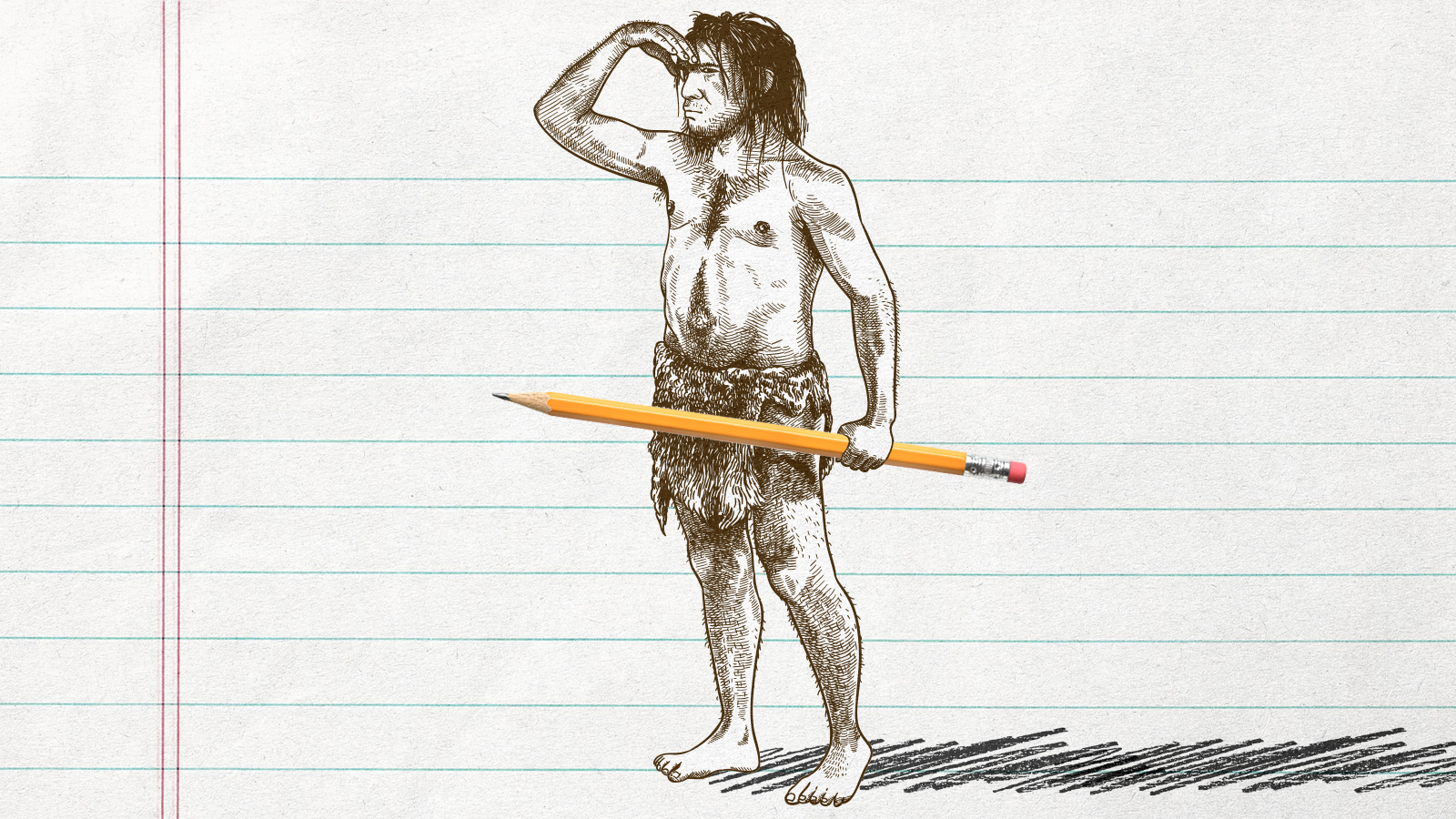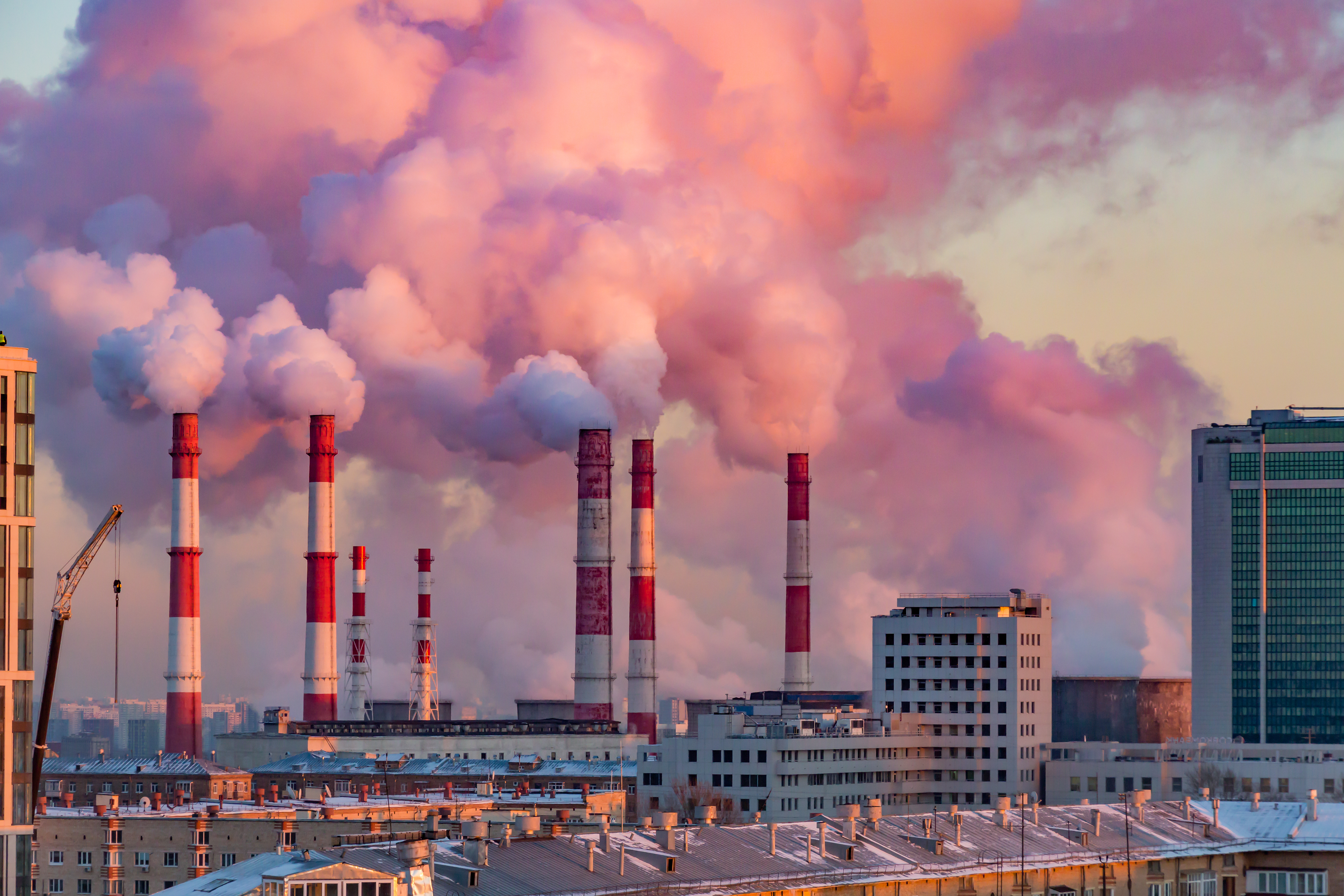Did hunter-gatherers have a writing system?
Our prehistoric ancestors are 'suddenly a lot closer'


Archeologists have decoded the markings on 20,000-year-old cave paintings created by Ice Age hunter-gatherers. The results show that early humans used writing to convey information far earlier than researchers previously believed. Here's everything you need to know:
Why did hunter-gatherers make cave drawings?
Scientists have known about prehistoric cave paintings for hundreds of years. Some of the oldest ones date back to the Neanderthals over 60,000 years ago, writes History. They depict people, animals, and hybrid creatures, as well as more abstract markings like dots and lines. These dots and lines have been found in over 600 cave drawings dating back to the Ice Age. Little was known about their purpose until recently.
Amateur archaeologist Ben Bacon spent years attempting to decode the abstract markings on the paintings, which experts believed to be a form of "proto-writing," reports The Guardian. He, along with a group of researchers, released a report identifying the drawings as means of artistic expression as well as record-keeping for animals' reproductive cycles.
The Week
Escape your echo chamber. Get the facts behind the news, plus analysis from multiple perspectives.

Sign up for The Week's Free Newsletters
From our morning news briefing to a weekly Good News Newsletter, get the best of The Week delivered directly to your inbox.
From our morning news briefing to a weekly Good News Newsletter, get the best of The Week delivered directly to your inbox.
They also deduced that in tracking reproductive cycles, early hunter-gatherers were following mating seasons by lunar month, BBC reports. "The results show that Ice Age hunter-gatherers were the first to use a systemic calendar and marks to record information about major ecological events within that calendar," explains Paul Pettitt of Durham University, one of the researchers who contributed to the report.
How was the discovery made?
Bacon was the first to see a pattern within the markings. About his process, he said, "Using information and imagery of cave art available via the British Library and on the internet, I amassed as much data as possible and began looking for repeating patterns." Bacon collaborated with researchers from Durham University and University College London (UCL) to release the findings in the Cambridge Archaeological Journal.
The most common markings were dots, lines, and a symbol similar to the letter "Y." He noticed that the "Y" marking appeared in a number of animal species drawings and came to the conclusion that it was a symbol representing giving birth. The symbol was depicted in between dot and line markings, which "constitute numbers denoting months," per the report. The "Y"'s position within the dots and lines "denotes month of parturition," or birth-giving.
With the belief that the markings represented ecologically significant events per the lunar calendar, the researchers set out to map it, explains The Independent. "Lunar calendars are difficult because there are just under 12-and-a-half lunar months in a year, so they do not fit neatly into a year," explained Tony Freeth, professor at UCL and researcher on the study. He added that early humans would have used a "'meteorological calendar' — tied to changes in temperature, not astronomical events such as the equinoxes."
A free daily email with the biggest news stories of the day – and the best features from TheWeek.com
In turn, the researchers conceptualized a calendar that "helped to explain why the system that [Bacon] had uncovered was so universal across wide geography and extraordinary time scales."
Why is this discovery important?
The breakthrough shows that our ancestors may have had more in common with us than previously understood. This research falls under the area known as palaeopsychology, which is "the scientific investigation of the psychology that underpins the earliest development of human visual culture," per BBC.
"The implications are that Ice Age hunter-gatherers didn't simply live in their present, but recorded memories of the time when past events had occurred and used these to anticipate when similar events would occur in the future," remarked another contributing researcher, Robert Kentridge, from Durham University. This discovery can be tied to the evolution of modern humans. "We're able to show that these people — who left a legacy of spectacular art in the caves ... also left a record of early timekeeping that would eventually become commonplace among our species," Pettitt said.
"As we probe deeper into their world, what we are discovering is that these ancient ancestors are a lot more like us than we had previously thought," commented Bacon. "These people, separated from us by many millennia, are suddenly a lot closer."
Devika Rao has worked as a staff writer at The Week since 2022, covering science, the environment, climate and business. She previously worked as a policy associate for a nonprofit organization advocating for environmental action from a business perspective.
-
 A running list of the US government figures Donald Trump has pardoned
A running list of the US government figures Donald Trump has pardonedin depth Clearing the slate for his favorite elected officials
-
 Ski town strikers fight rising cost of living
Ski town strikers fight rising cost of livingThe Explainer Telluride is the latest ski resort experiencing an instructor strike
-
 ‘Space is one of the few areas of bipartisan agreement in Washington’
‘Space is one of the few areas of bipartisan agreement in Washington’Instant Opinion Opinion, comment and editorials of the day
-
 5 of the most invasive animal species on the planet
5 of the most invasive animal species on the planetSpeed Read Invasive species are a danger to ecosystems all over the world
-
 Air pollution is now the 'greatest external threat' to life expectancy
Air pollution is now the 'greatest external threat' to life expectancySpeed Read Climate change is worsening air quality globally, and there could be deadly consequences
-
 How climate change is impacting the water cycle
How climate change is impacting the water cycleSpeed Read Rain will likely continue to be unpredictable
-
 Why spotted lanternflies are back and worse than ever
Why spotted lanternflies are back and worse than everSpeed Read It's time to get squashing!
-
 Peatlands are the climate bomb waiting to explode
Peatlands are the climate bomb waiting to explodeSpeed Read The destruction of peatlands can cause billions of tons of carbon to be released into the atmosphere, worsening the already intensifying climate crisis
-
 Wind-powered ships are back. But will they make an impact?
Wind-powered ships are back. But will they make an impact?Speed Read The maritime industry is eyeing a pivot back to basics
-
 The growing threat of urban wildfires
The growing threat of urban wildfiresSpeed Read Maui's fire indicates a phenomenon that will likely become more common
-
 A summer of shark attacks
A summer of shark attacksSpeed Read A spate of shark attacks off the Northeast coast has swimmers and surfers on edge. What’s behind the biting spree?
